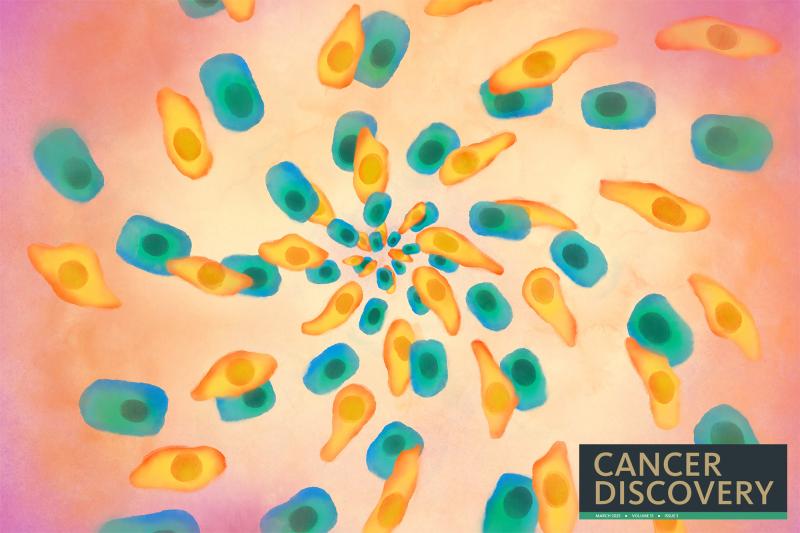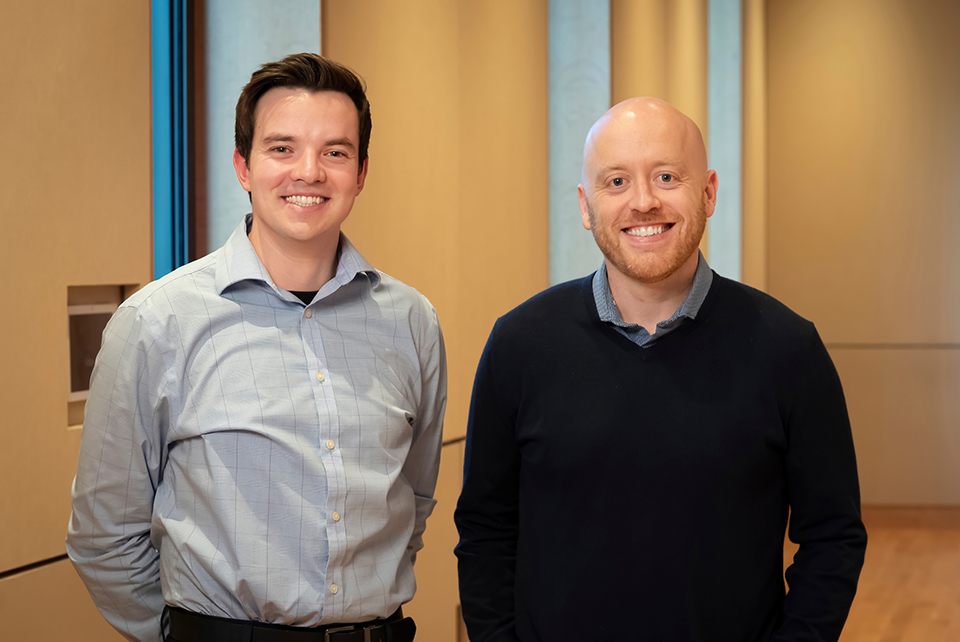
It happens to people with cancer every day; a first-line drug shrinks the tumor noticeably, but then the cancer returns, this time more aggressive and resistant to treatment than before.
A multi-faceted study from Duke University School of Medicine researchers Kris Wood, PhD, associate professor of pharmacology and cancer biology and associate professor of cell biology, and graduate student Shane Killarney shows for the first time that blocking an under-studied enzyme called PKN2 may be the key to treating these aggressive cancers.
“Our study suggests that combining first-line drugs with PKN2 inhibitors might help prevent these nasty, resistant tumors from emerging,” said Killarney, who is first author of the study published March 3, 2025, in the journal Cancer Discovery and featured on the cover.
An accompanying commentary called the work “especially noteworthy” because PKN2 is part of a group of kinases (enzymes) known as the “dark kinome” because scientists know so little about them.
“It’s an open question right now as to whether we'll be able to repurpose existing molecules to target PKN2 or whether we actually need to make completely new molecules to achieve that goal,” Wood said. An existing drug in phase 3 clinical trials appears to inhibit PKN2, though that isn’t what it was designed to do, he said.
While exploring that avenue, Wood’s lab is working to “define what an optimal PKN2 inhibitor would look like.”
Multiple Studies in One
Cancer that initially responds to treatment but then returns is hard to kill because it has often transitioned from an “epithelial” cell state to a “mesenchymal-like” cell state, becoming more invasive and likely to spread, Wood said. “All drugs tend to work worse in mesenchymal-like tumors.”
Trying to find a better way to fight these cancers, Killarney analyzed publicly available datasets from the Cancer Dependency Map Portal at the Broad Institute, which showed what happens to hundreds of different cancer cell lines when different genes are “knocked out,” or inhibited.
He learned to work with these databases during the COVID-19 lockdown, when his time to physically be in the lab was limited. “I don't need to produce thousands of cell lines or have thousands of patient samples as long as I know how to access and manipulate what's already out there,” Killarney said. “That allows us to identify new therapeutic targets much quicker than previous generations of cancer researchers could.”

The data analysis showed that PKN2 was required for survival for mesenchymal-like tumors across many different types of cancers. The researchers were excited by this finding because PKN2 is part of a “druggable” class of enzymes known as kinases. “We know how to make drugs that block kinases,” Wood said.
They tested it for themselves in the lab with mesenchymal-like human cancer cell lines, including melanoma, non-small cell lung cancer, and triple-negative breast cancer, and found that eliminating PKN2 killed the cells. Killarney also conducted “fundamental biochemistry” experiments to find out how PKN2 works, revealing that it’s regulated through a particular pathway called the Hippo-YAP-TAZ pathway, which is important in many cancers and other diseases, Wood said.
Next, Killarney wanted to find out if inhibiting PKN2 in mouse models of human cancers would help targeted cancer therapies work better. “Shane demonstrated in what I think is an incredibly impressive set of experiments that you can create residual tumor models from different types of solid cancers — lung cancers, melanoma, colorectal cancer – and that these residual tumors require PKN2 for their survival,” Wood said.
For instance, with lung cancer, Killarney transplanted human lung cancer cells into mice, then treated the mice with a targeted therapy (Osimertinib). At the start of that treatment, he triggered the genetic knockout of PKN2 with an additional drug. After nine days, he stopped the therapy, and fewer tumor cells grew back than in control tumors expressing PKN2.
“If you knock out PKN2, these residual tumor cells are no longer able to survive,” Wood said. “And that allows you to get a much more penetrant and durable therapeutic effect with drugs that you apply to these cells.”
Other Duke University authors of the study were Donald P. McDonnell, Ann Marie Pendergast, and Suzanne E. Wardell. Additional authors: Gabriel Mesa, Rachel Washart, Benjamin Mayro, Kerry Dillon, Madeline Newlin, Min Lu, Areej Abu Rmaileh, and Nicky Liu.
The research was funded by Duke University School of Medicine start-up funds, Duke Cancer Institute, the Department of Defense Lung Cancer Research Program, a Duke Medical Scientist Training Program grant, the TriCEM Graduate Student Award, and the National Institutes of Health (grant numbers R01CA263593, R01 CA246133, 5P30-CA014236-50, and F99/K00 CA264162).